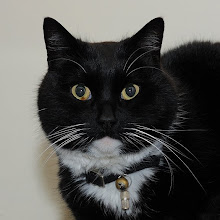There were, of course, exceptions. Most prominent are the regiments of foot guards. These regiments had a larger number of companies, with a somewhat larger establishment, and could, probably therefor, spawn several battalions to serve somewhere.
(Here I explicitly void using the phrasing 'split into several battalions'. From literature it seems that the battalion was foremost an ad-hoc tactical formation. The concept of a battalion as a permanent administrative entity was something for the future. Thus, a regiment of foot guards, say the Coldstreams with 14 companies, could be divided into two battalions in the field or for manoeuvres. But this does not apply that something existed as a 1st and 2nd Battalion.)
One famous general of the Nine Years' War and War of the Spanish Succession was Thomas Erle. In the spring of 1689, when the English army was increased in size, Erle was given a colonelcy of one of the newly raised regiments. It was quite exceptional that he would obtain the colonelcy of yet another regiment in January 1691, namely the regiment of the late Francis Luttrell (the future Green Howards of North Yorkshire). This regiment was raised in November 1688, immediately after the Dutch invasion and in support of William III.
(Erle's first regiment served in Ireland until 1691, and was in garrison in Plymouth(?) afterwards. It also took part in the abortive action against Brest in 1694. His second regiment, Luttrell's, was in Plymouth until 1692 when it proceeded to Flanders for the rest of the war.)
Now is becomes a little tricky how these regiments were related to each other. Some sources state that Erle's first regiment was sometimes known as the 2nd Battalion of his (larger) regiment (because is was junior to his second regiment). Probably this is a modern day interpretation (imposing modern concepts on the past).
From the Calendar of State Papers Domestic a few things become (more or less) clear:
1. Commissions in the regiment of Erle do not differentiate between one of the two regiments. So it seems that both regiments were combined as a new regiment, or that is was treated as one.
2. There is no reference to a 1st or 2nd battalion. However, there is sometimes reference to 'his other regiment'.
A few snippets:
On 22 March 1692 we find
John Pitt, clerk, to be chaplain of the Irish battalion belonging to Col. Thomas Earle's regiment of foot.and on 12 April 1692, related to the weak garrison of Plymouth
There now are only ten companies of Colonel Earle's regiment in garrison at Plymouth, which by reason of the great drafts for his other regiment lately gone to Flanders, which was recruited out of this, are very weak, and most of them newly raised men.Finally, on 28 April 1694, probably in preparation of the Camaret Bay operation
Whereas the following several battalions and regiments of foot are to encamp near Portsmouth, viz.: one battalion detached out of our first, second, and Dutch regiments of foot guards; thirteen companies of Colonel Earle's regiment, Lord Cutts' whole regiment, and Colonel Venner's whole regiment; the said battalions and regiments [...]This last quote illustrates, in my opinion, that Erle's regiment was larger than the usual 13 companies to a regiment. In the yearly estimates for the army presented to Parliament both regiments/battalions of Erle are listed separately, however. One with the additional 'formerly Luttrell's', and the other with 'from Ireland'.

















